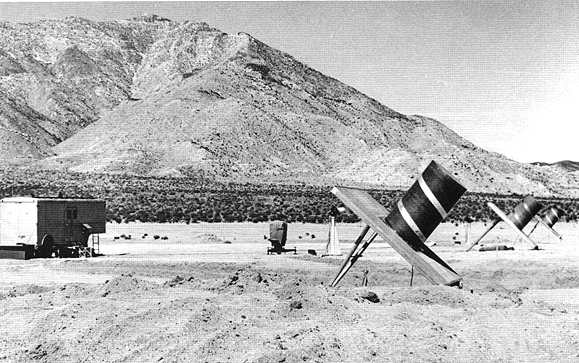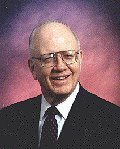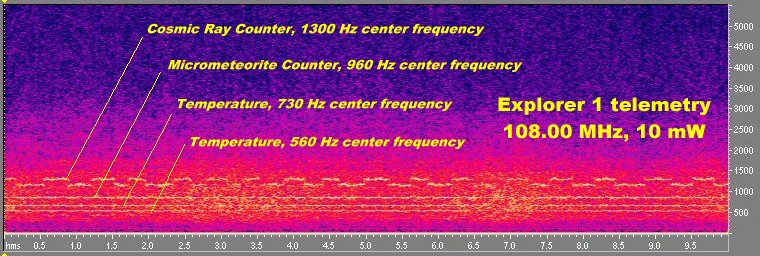
Explorer 1, the first satellite ever launched by the U.S.A., had two RF frequencies, 108.0 MHz and 108.03 MHz. The builder of the satellite, the Jet Propulsion Laboratory, tracked the satellite from stations in California. According to Matt Bille the picture below, with its row of short helices, probably shows the temporary station at Borrego Springs in Earthquake Valley.

 The
recording shown below is from the 108.0 MHz frequency. In (1)
the system used to transmit the cosmic ray data is described: "...The
Geiger tube pulses of the Cosmic Ray Counter experiment were scaled by
a factor of 32 and then applied as a two-level voltage signal to a
voltage-controlled
oscillator having a center frequency of 1300 Hz. The discontinuously
jumping
frequency of the VCO was used to modulate the transmitter. The signal
received
and recorded at a ground station was eventually converted back to a
square
wave (of statistically varying width) and displayed as a function of
time
on the strip chart of a pen-and-ink recorder. ...."
The
recording shown below is from the 108.0 MHz frequency. In (1)
the system used to transmit the cosmic ray data is described: "...The
Geiger tube pulses of the Cosmic Ray Counter experiment were scaled by
a factor of 32 and then applied as a two-level voltage signal to a
voltage-controlled
oscillator having a center frequency of 1300 Hz. The discontinuously
jumping
frequency of the VCO was used to modulate the transmitter. The signal
received
and recorded at a ground station was eventually converted back to a
square
wave (of statistically varying width) and displayed as a function of
time
on the strip chart of a pen-and-ink recorder. ...."
In (1) it is indicated that the VCO at 730 Hz transmitted the temperature at the nose cone, while the 560 Hz VCO showed temperature data at the skin of the satellite.
Listen to the recording of Explorer 1: (16 kb mp3). This recording was made by Roy Welch (see picture above right) in Dallas, Texas on February 11, 1958 at 0100 UT using a home-made VHF converter in front of a National NC-300 receiver.
At Roy's tracking post, there was no tracking antenna available to follow Explorer 1 across the sky. The antenna was cut for 108 MHz for listening to the upcoming US satellites. It was a six element co-linear array constructed on a 4 by 4 meter wooden frame and suspended above a "chicken wire" reflector. The whole array was placed on the roof of the house looking up at about 75 degrees above the southern horizon. Satellites were captured as they flew through the main lobe of the antenna.
